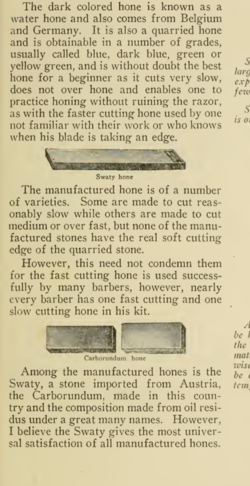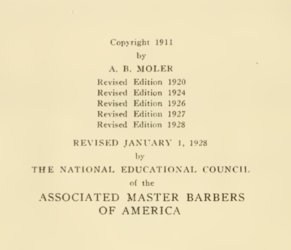I am not a straight razor user, but a recent thread on modern razor honing has got me wondering.
We are blessed today with a plethora of stones, films and pastes all just a few computer clicks away.
I’m curious at how many stones a good town or village barber in the late 18th/early 19th century owned? Did they rely more on strops? Would they provide sharpening services to men who would owned their own razors?
We are blessed today with a plethora of stones, films and pastes all just a few computer clicks away.
I’m curious at how many stones a good town or village barber in the late 18th/early 19th century owned? Did they rely more on strops? Would they provide sharpening services to men who would owned their own razors?





